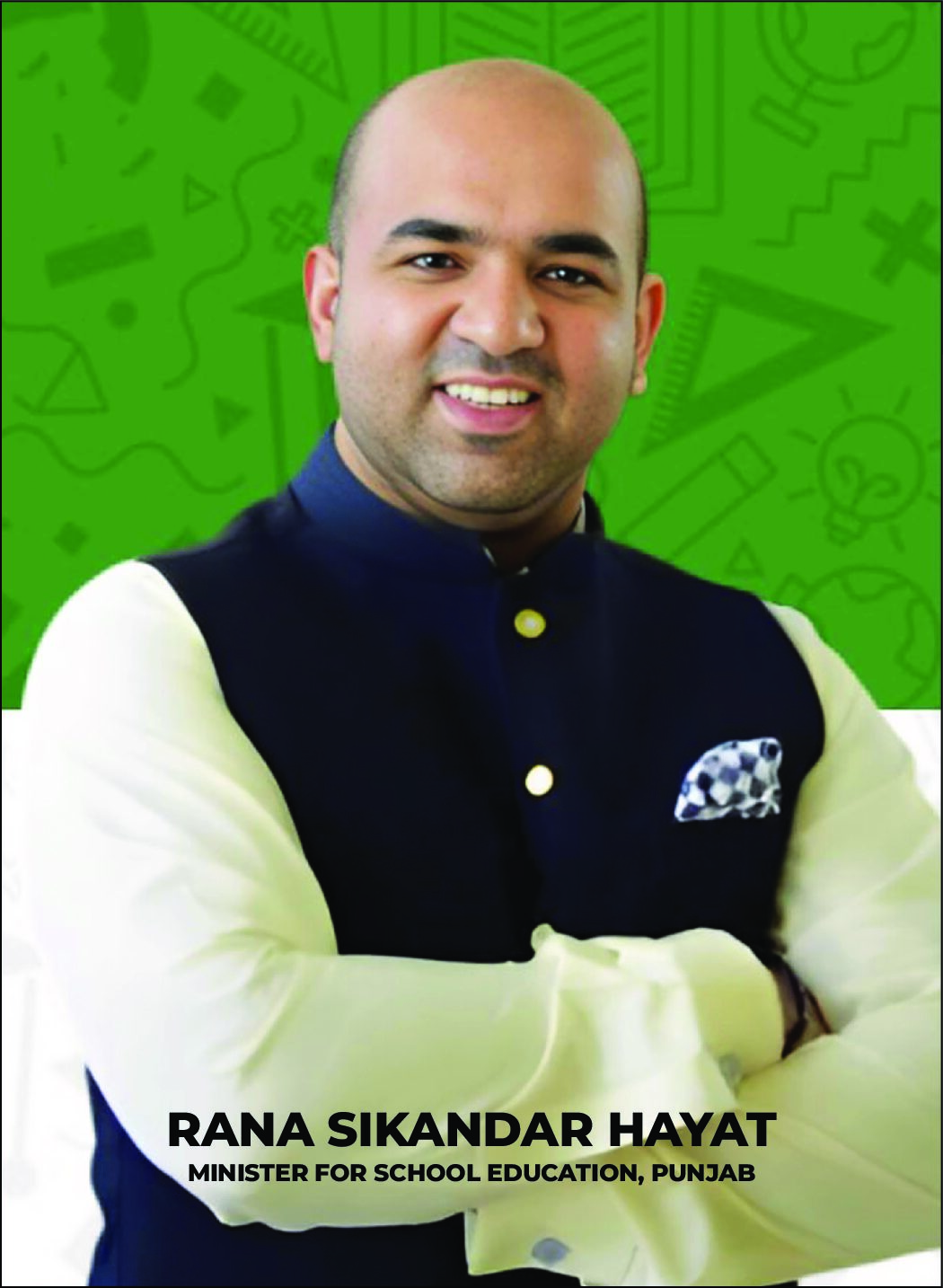Sikandar Hayat’s vision for the education sector in Punjab focuses on comprehensive reforms aimed at improving literacy rates, enhancing the quality of education, and ensuring equitable access for all students. Key components of his vision include modernizing the curriculum, integrating technology into classrooms, and strengthening teacher training programs.
Additionally, Hayat emphasizes the importance of vocational training and skill development to prepare students for the job market and is committed to increasing public investment in education infrastructure. His informative talk with the team of Defence Journal is as follows:
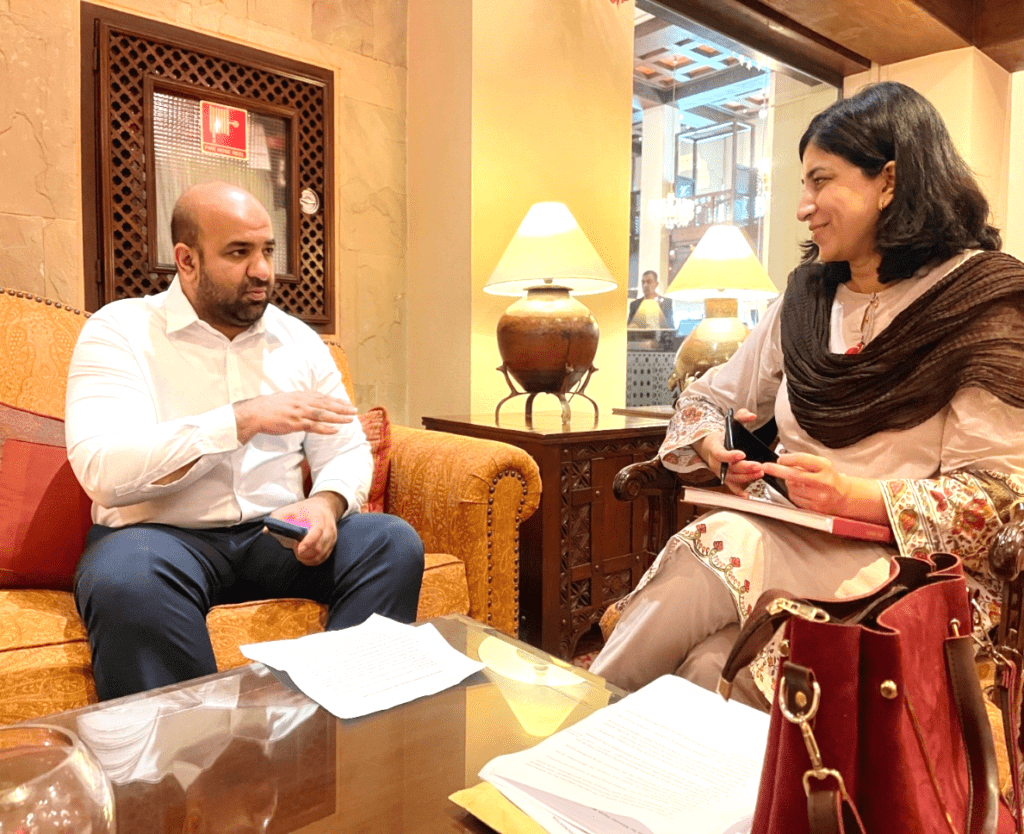
Question & Answer Session
How and when did you decide to join Politics?
I didn’t initially want to join politics. After being away from home for 16 years, my father asked me to spend a few months with the family. Eventually, I ended up staying, and about a year and a half later, I began to think that I could make a difference and provide relief. Instead of someone else from my family who wasn’t providing relief, I felt I could be held accountable. So, I entered politics during the 2013 general elections on behalf of my father, and I was elected as the Youngest Mayor of Pakistan at the age of 28 years. I was the district Mayor of Kasur district which is called ‘Zilah Nazim’ in Urdu. When I became mayor, Kasur was ranked 18th in education, and after 11 months, it was ranked first.
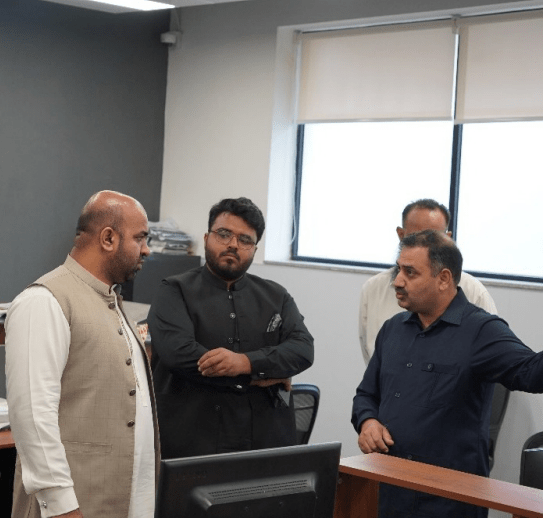
Tell us something about the initiative of the literate Punjab.
Yes, so there are both fronts: Sarkari schools, Mayari schools, and the Literate Punjab initiative. Literacy and non-formal education, such as adult literacy and digital literacy, fall under different departments altogether. Over the last 20 years, we’ve seen a shift from government schools to private schools. Many of the top officials today were once students of Sarkari schools. We still have top performers, but I believe we lost track and need to regain the trust of the people..
I was looking at the education budget, particularly for Punjab. It’s 13%, which is a good thing—I’m not saying it isn’t—but we all know it’s not enough. There are still 28 million out-of-school children in Pakistan. What’s your take on that?
I will simplify it for you. Out of the total number of outof-school children in the entire world, one-tenth are in Pakistan, which also has the second-largest number globally. However, there are some initiatives that I think you’ll be pleased to hear about. One of them is the School Management Council. Previously, any development that took place was outsourced to the Communication and Works Department (C&W) and the building department. There are various issues in the development sector and government sector. Developers were constructing a room for 48 lakhs, whereas the same room could be built for 8 lakhs.
Through the School Management Council, we’ve increased their budget cap from 4 lakhs to 40 lakhs. Now, we will build the rooms ourselves. We are hiring 150 engineers on contract in every Tehsil—fresh graduates with a year or two of experience and individuals from the local community. A Chairman from the community, along with the headmaster, will oversee the process. Imagine that in a World Bank project where we were initially planning to build 1,000 rooms, we are now able to build 4,000 rooms—four times the development within the same budget. Now about the issue of outof-school children. If you look at different data from various partners, organizations, or the government, including the Pakistan Institute of Education (PIDE), the question remains: where are these children? Who has mapped them? How many are there in each city? Giving general speeches is easy, but the real challenge is identifying and locating these children. That’s where the concept of a school census comes in. We plan to conduct a school census this year to accurately determine and map these children across private schools, government schools, Punjab Education Foundation (PEF) schools, Punjab Education Initiatives Management Authority (PEIMA) schools, Madrasas, and school chains. With the NADRA integrated system in 2024, finding someone isn’t an issue, and you cannot have general policies without precise data.
We are currently running a stipend program in 16 districts for female retention and out-of-school children. However, we don’t even know which districts have the most out-of-school children. Both short-term and long-term policies need to be targeted toward those specific areas—whether in urban slums, rural are as, or particular districts and cities. This is the most important initiative we’re undertaking now. Additionally, the public school reorganization is being done through an outsourcing model. We’re not investing even a single rupee in this; instead, we’re leveraging foreign donors to conduct the school census. We’ve informed them that if they want to implement soft interventions, they should focus on this so that we can maximize the benefits.
Foreign donors like FCDO and the World Bank are helping us with these two projects, and they have been very supportive partners. We’re very grateful to them. For the first time, their funds have been utilized efficiently, and this is the first time that the budget has been stretched to achieve four times more. As I mentioned earlier, we’ve built the 4,000 rooms, including computer labs. The donors are also very excited that we’ve been able to accomplish four times as much with the same amount of money. So, with smart planning, the budget can do wonders. Furthermore, bureaucratic hurdles have been removed. We no longer need the involvement of Deputy Commissioners, who are very honourable to us. We believe this is our responsibility and the schools’ responsibility, and we’re working together on it. The building department is no longer involved, C&W is gone, as are the SDOs, XENs, and the rest. Now, it’s just us and the schools.

What are the major projects that you want to highlight?
The ‘School Meal Program’ has been introduced for every primary school grade, from grade 1 to grade 5. The expression of interest has been completed, and a pilot has been rolled out in Muzaffargarh, Layyah, and another district in South Punjab. The program will be implemented in three districts of South Punjab, namely DG Khan, Muzaffargarh, and Rajanpur, as a pilot phase. Subsequently, it will be expanded to all districts in a phased manner. Then there’s our ‘School Reorganization Program’, through which we are addressing the issue of teacher shortages. Currently, there are 48,000 schools in total, and 118,000 teachers are needed. There are two components to this issue. First, we are short 118,000 teachers in certain areas. But who has checked where there are excess teachers?
For instance, if there were only 6 positions to be filled somewhere, 16 teachers might have been recruited. Through rationalization, we are redeploying 20,000 excess teachers from government schools to rural schools. There is no need to recruit new teachers. You might be surprised to know that in some cases, there are 2 students for 2 teachers. Yesterday, I saw one school with 70 students and 18 teachers, where the Student-Teacher Ratio (STR) should only require 8 to 10 teachers. This is the situation we’re dealing with right now.
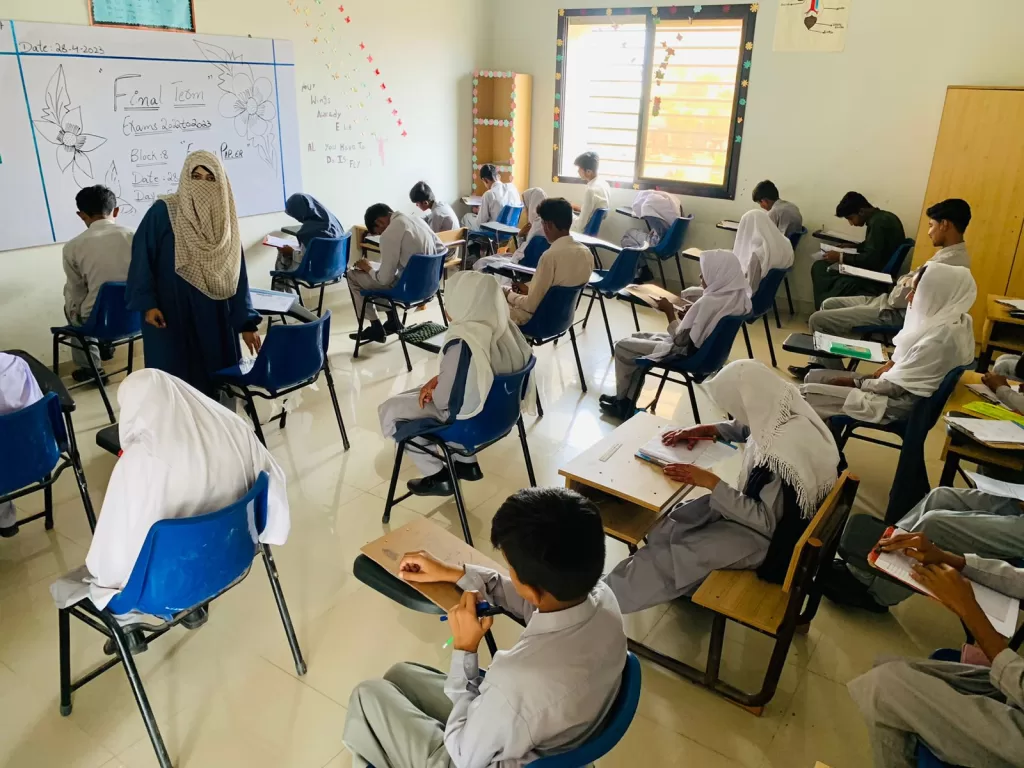
What is your opinion on the ghost school and ghost teachers?
We identified 20 lac ghost students. Out of 10.19 million, 1.9 million were not even there. That’s why we opted for NADRA verification. So many things have been done wrong as a matter of policy, but 670 billion rupees, over 2 billion dollars, is a substantial amount. The money isn’t the issue. 2 billion dollars annually for the education of one province is a lot.
We have handed over 13,000 schools to the Public School Reorganization Program (PSRP) to reorganize them. These are schools where there are no teachers, or where there is only one or two teachers out of eight, and enrollment is less than 50 or even less than 100. If you’re investing so much money and the student count isn’t growing beyond 50, then something is wrong. And if there’s no teacher in the school, how can you expect students to be there? There are 800 schools where students are present, but teachers are not. If the teacher isn’t going to teach, why would the students attend? What we’re doing about this, is outsourcing these 13,000 schools to EMOs (Education Management Organizations). We will monitor them and provide a perchild subsidy. The villagers won’t have to pay a single rupee. We are offering this opportunity to young individuals this year. For example, any female who has completed a master’s or a bachelor’s degree, or two partners, or even an individual, like Mushtaq Shukhera, a retired IG, who said, “I’ve returned to my village; let me run it”, will be able to manage these schools. Moeed Yusuf, head of BNU, called me this morning and said he wants to adopt two schools. These are people who have accomplished great things. It’s a successful model; when Shahzad Roy started it, the idea was to adopt government schools. Ali Zafar has done it as well, and now we are bringing in the native initiative. You might not trust the government, but we’ll tell you exactly what your school needs, like an impact meter. You can help through NGOs you trust, like Akhuwat or TCF. We only need 50 days to bring that facility to your school.
What’s interesting is that in these 13,000 schools, there were 23,000 teachers. We brought them into the mainstream. We rationalized 20,000, reducing the teacher shortage to 75,000 through two policies. Now, these schools needed 35,000 more seats, which have also been filled. So, we’re now down to a shortage of 35,000 teachers. The initial 118,000 has been reduced to 35,000. That is the reality. The rest of the issue was addressed through one smart policy and rationalization, showing both vacancies and excesses. With these two policies, we’re now at a 35,000 teacher shortage. This approach will also help address the out-of-school children issue. Our outsourcing model now ranges from 900 to 1,500 rupees, depending on performance.
Previously, everyone was given a flat 800 rupees, but even then, the teaching quality was lacking. Now, imagine a husband and wife going to every household, educating children because they will earn 1,500 rupees per month for each child’s education. If, in these 13,000 schools, 200 children are educated, do the multiplication. For 200 kids, you’ll need 6-7 teachers and 3-4 grade 4 employees. If each school generates 10-15 jobs, that’s 200,000 jobs across all schools, and they’re all young people under 35.
Did you encounter any dissent or bureaucratic problems?
Yes, I did. But I was very clear-headed about it. This is taxpayer money; it’s not my funds, honestly. If I had to run those 13,000 schools, I would have needed an additional 100 billion rupees. I wasn’t prepared to do that, especially not with taxpayer money. But through this approach, we have saved a billion rupees. We’ve addressed the teacher shortage by 50% and are now handing over the schools to capable individuals who want to work. I’ve had females from rural areas approach me with genuine interest. For example, there was a school doctor who got married and whose inlaws didn’t allow her to work. She said, “This is my school; I will run it. I’ve done my MBBS; I have experience.” We’ve also received applications from a few hundred PhDs who want to run these schools.
This is an excellent model. One of the biggest initiatives was upgrading primary schools that went up to grade 5 to direct elementary schools. If you’re giving the schools to the private sector, they should teach up to grade 8. It’s not necessary to limit it to grade 5 because EST and PST teachers can teach up to grade 8, and honestly, you don’t need an M.Phil for that. This up-gradation of 13,000 schools was accomplished for free through a single initiative.
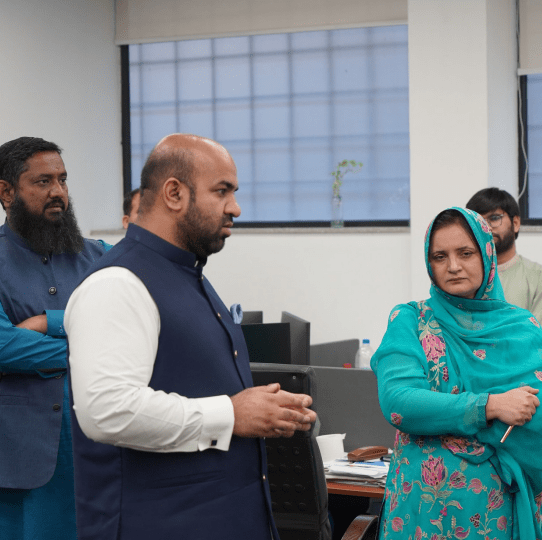
What are your thoughts on the challenge faced by Pakistani skilled labour (especially in blue-collar jobs), where despite having the necessary skills, they lack international certification, making it difficult for them to secure jobs abroad?
One reason I am in Islamabad right now is that Google recently launched their Gemini project, and they’ve also introduced Google CS First. This program teaches coding to children and provides cloud IDs to 50,000 students, certifying them. Additionally, 1,000 teachers will receive L1 certification, and Google will conduct the tests. This means our teachers will be certified for the next five years anywhere in the world. As you mentioned, they could even work online in the US. Certification is crucial. We have already signed the MOU, and our training for 1,000 teachers started two weeks ago. By the end of this month, they will have their L1 certification. The key is that children should learn skills from a level they can understand. Private schools have advanced to offering courses in Robotics, Python, and early-year curriculums. Thanks to NAVTTC, we are collaborating with them through the Technical Education & Vocational Training Authority (TEVTA) and the Prime Minister’s Youth Skill Development Program (PMYSDP). We have alternative avenues available, including inter-tech and metric-tech programs, as well as arts and science tracks. It’s surprising to note that while we have 900,000 students in grade 10, only 70,000 return in the first year of college, just one-tenth. If a child starts learning a trade, like motor mechanics, they often do not get paid for the three years of training. So, we will teach him, we will give them the skills they require to earn. To address this, we plan to start afternoon skills programs in 1,000 schools. These programs will focus on practical skills and skill-learning outcomes.
It’s absurd that in grade 8, students are still learning about CD-ROMs, which are now obsolete. Google is also setting up a Chrome plant in Pakistan, which will reduce the cost of an i5 processor from approximately 250,000 rupees to around 80,000 rupees, in partnership with an Australian company called Allied. I have recently inaugurated the Punjab’s first Free IT City at APS School, Model Town. Students can now learn modern IT courses for free which cover topics like Amazon, Graphics, and CorelDRAW.

What about English Language Certification for skilled individuals like nurses and paramedical staff, as they are not getting paid enough due to the English language barrier?
Thank you for that point. Recently, we had a delegation from the Deputy Speaker of the New York State. They passed a bill in their assembly, and we have signed an MOU with them, allowing them to bring nurses from Pakistan to the US, as a nurse in the US costs around $85,000, whereas ours costs a maximum of $30,000.
The next phase is to include teachers, we have also requested that teachers be included in this program. We have set up foundation learning accelerated courses in English, Math, and Science, with 6,000 camps established. However, you’re right, language certifications, especially for English, are crucial. Many individuals get stuck during interviews due to language barriers, which is a significant obstacle. The issue is with skilled labourer who fails due to a lack of communication skills in the English language. Institutes like the Bunyad Foundation can be utilized to teach English to them. We are also signing an MOU with the Deputy Speaker of New York, where 3,000 students from here will regularly communicate with 3,000 students in New York and 500 teachers from here will communicate with 500 teachers there. The goal is twofold: to improve English language skills and to understand current technological advancements. This way, they will learn about practices in the US, including monitoring and curriculum reforms.
One of our major initiatives is TEVTA. Currently, there is a disconnect between the exams conducted by teachers and the training they receive. If a curriculum is designed without consulting the teachers on what they can teach, it won’t be effective. TEVTA focuses on teacher training and certification, addressing this issue. Having an MA in English does not necessarily mean a teacher is effective. Teaching is an art that requires more than just a degree; it needs practical skills tested through pre-service assessments.
That’s why we are introducing additional certification through the Punjab Examination Commission (PEC), Punjab Curriculum and Textbook Board (PCTB), and QAI, the training institute. We are bringing in experts to lead this initiative.In TEVTA, we are involving the top 100 professionals from the education industry. The cost will be minimal compared to our budget, and these experts will have the authority needed to make impactful changes. Merit and expertise from the private sector are our priorities. These two factors will ensure sustainability and effectiveness, and I am very hopeful about the outcomes.
You recently represented Punjab at the Education World Forum in London, where education ministers and secretaries from 130 countries gathered. How do you see this event benefiting Punjab’s educational landscape?
It was a privilege to represent Punjab at such a prestigious international forum. The Education World Forum provided an invaluable platform to highlight the importance of education in fostering social partnerships and addressing common challenges. I had the opportunity to share the Punjab government’s educational initiatives and our vision for reforms under the Muslim League-N. The interaction with global education experts allowed us to exchange valuable insights and experiences. This gathering is not just about learning from others but also about building community networks that will help us tackle educational challenges more effectively. The conference has set the stage for future collaborations that will undoubtedly benefit Punjab’s education sector.

We have been discussing harassment in madrasas, but harassment also occurs in private and government schools. What is your take on it?
We are installing smart cameras in almost every school. I have personally registered 15 FIRs related to harassment, speaking directly with the IG because people in rural areas can be insensitive. These conversations with the PSO and IG address various harassment issues, all of which are related to teachers. Female teachers must work in female schools, which is a positive step.
Additionally, COs, deputies, and DOs should receive psychological training because harassment is unacceptable and often taken too lightly. We provide two weeks of training for any newly appointed COs, along with a psychological test conducted by PPSC. This helps assess their sensitivity to female issues. Ideally, at least 30% of COs and deputies should be female and should have the authority to address these issues effectively.
One reason for the high female dropout rate or out-ofschool girls is a lack of trust and transportation issues. You’ll be pleased to know that we are working on buses equipped with cameras. Parents will receive notifications when their child is about to be dropped off. Although the school infrastructure is in place, transportation is causing smog, and we are incorporating climate change topics into our curriculum. Transportation contributes 83% of smog, with cars making multiple trips for drop-off and pick-up. To address this, we have started e-learning initiatives. For example, in Malka Hans, a government school is successfully implementing e-learning, which is proving to be an excellent model, allowing many teachers to be accessible through this method.


